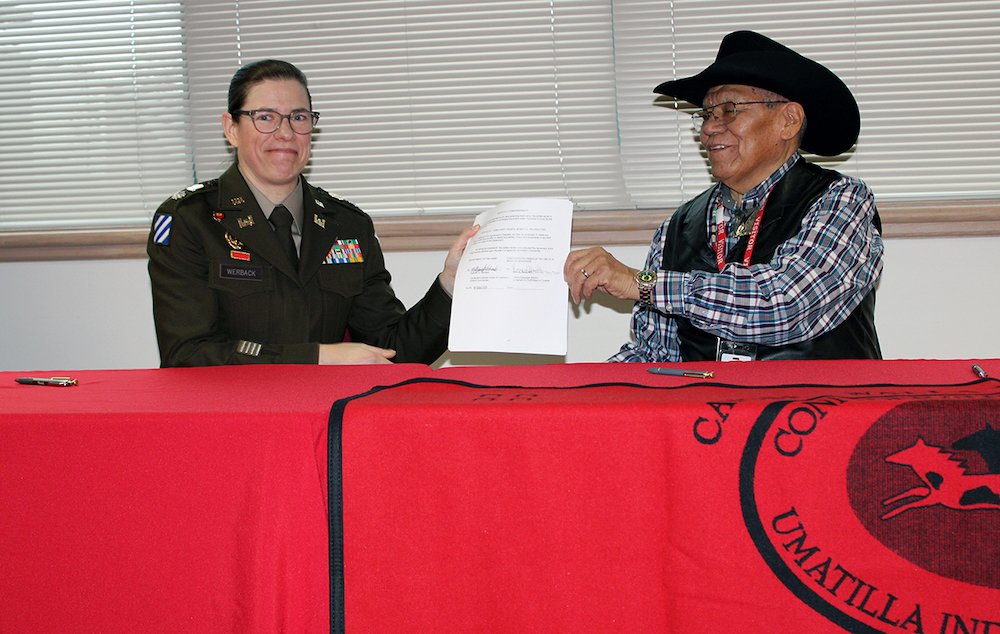
- Details
- By Tribal Business News Staff
The Confederated Tribes of the Umatilla Indian Reservation and the U.S. Army Corps of Engineers signed an agreement Friday to improve fish passage in Mill Creek near Walla Walla, Wash.
"For many years, flood control was the driving force of river management without consideration of impacts to the natural environment," CTUIR Chairman Gary I. Burke said in a statement. He noted that while public safety remains crucial, the tribes have worked with the Corps to show that environmental protection and flood control can coexist.
The $10 million project will modify flood control structures that have blocked salmon and other fish from reaching their spawning grounds for over 80 years. Workers will create channels through 63 small dams along nearly a mile of the creek, making it easier for fish to swim upstream and downstream.
The Walla Walla Basin has excellent habitat in its headwaters, but development in the lower basin has severely degraded fish passage for salmon, according to Jerimiah Bonifer, the tribes' fisheries program manager. "This project is aimed at improving passage to give salmon populations the potential to flourish after decades of declines," he said in a statement.
Walla Walla District Commander Lt. Col. Kathryn Werback called the signing a "milestone" in the Corps collaboration with the tribe, adding, "Mill Creek is home to several ESA-listed species and other species that represent more than just biodiversity, which we hope will thrive for generations to come."
The flood control structures were built in the early 1940s to protect Walla Walla from flooding, but they made it difficult for fish like steelhead and salmon to navigate the creek. The agreement represents a new approach that balances flood protection with environmental concerns.
The signing ceremony, which took place at the Corps' Walla Walla office, coincided with the five-year anniversary of the tribe's South Fork Walla Walla Fish Hatchery, marking continued progress in regional conservation efforts.
Can we take a minute to talk about tribal sovereignty?
Our mission draws from the warrior spirit that has sustained Indigenous peoples for generations — the same spirit that drives us to stand guard over tribal rights through relentless investigation and fearless reporting.
Sovereignty isn't just a concept – it's the foundation of Native nations' right to govern, protect our lands, and preserve our cultures. Every story we publish strengthens tribal sovereignty.
Unlike mainstream media, we center Indigenous voices and report directly from Native communities. When we cover land rights, water protection, or tribal governance, we're not just sharing news – we're documenting our living history and defending our future.
Our journalism is powered by readers, not shareholders. If you believe in the importance of Native-led media in protecting tribal sovereignty, consider supporting our work today.
